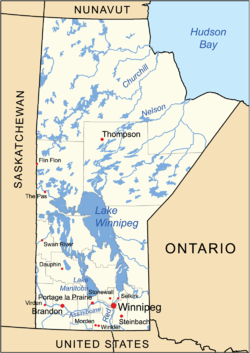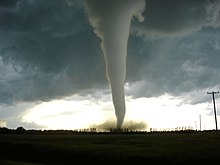

The following outline is provided as an overview of and topical guide to Manitoba:
Contents
- General reference
- Geography of Manitoba
- Location
- Environment of Manitoba
- Heritage sites in Manitoba
- Regions of Manitoba
- Demography of Manitoba
- Government and politics of Manitoba
- Branches of the government of Manitoba
- Law and order in Manitoba
- Military of Manitoba
- Local government in Manitoba
- History of Manitoba
- History of Manitoba, by period
- History of Manitoba, by region
- Culture of Manitoba
- People of Manitoba
- Religion in Manitoba
- Sports in Manitoba
- Symbols of Manitoba
- Economy and infrastructure of Manitoba
- Education in Manitoba
- See also
- References
- External links
Manitoba – Canadian prairie province. The province, with an area of 649,950 square kilometres (250,900 sq mi), has a largely continental climate because of its flat topography. Agriculture, mostly concentrated in the fertile southern and western parts of the province, is vital to the province's economy; other major industries are transportation, manufacturing, mining, forestry, energy, and tourism. Manitoba's capital and largest city is Winnipeg.

